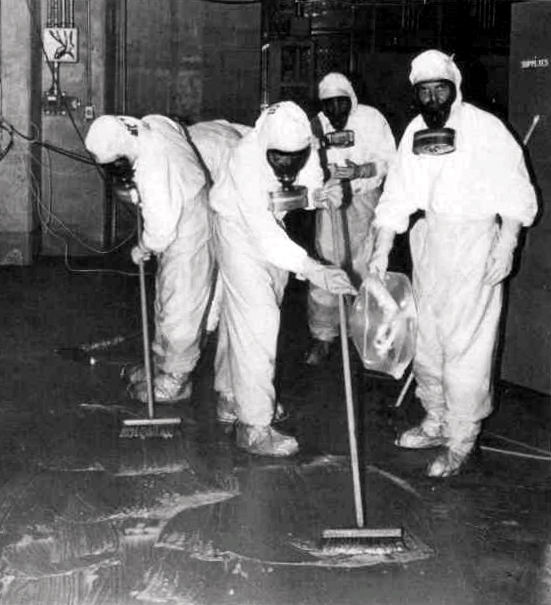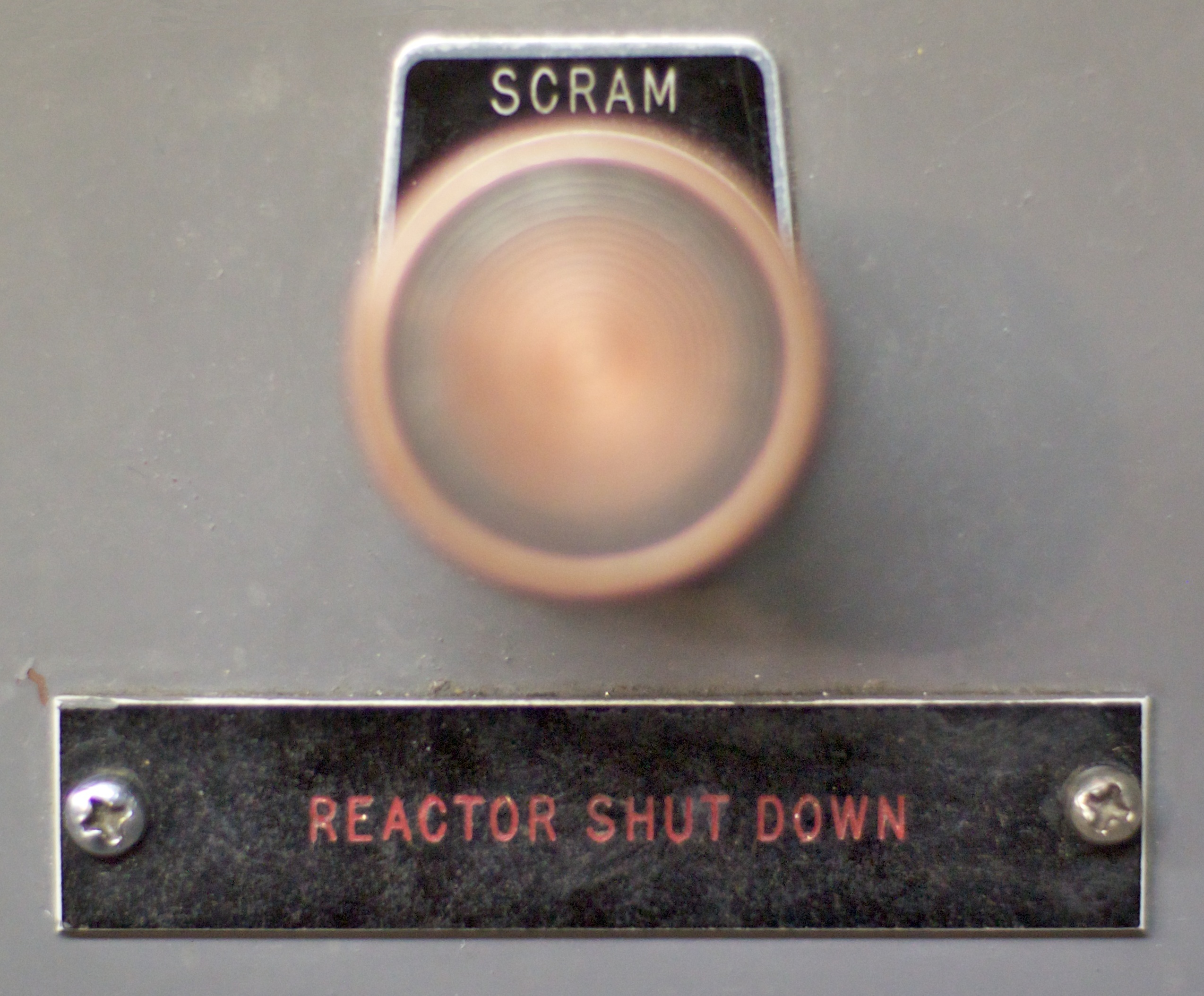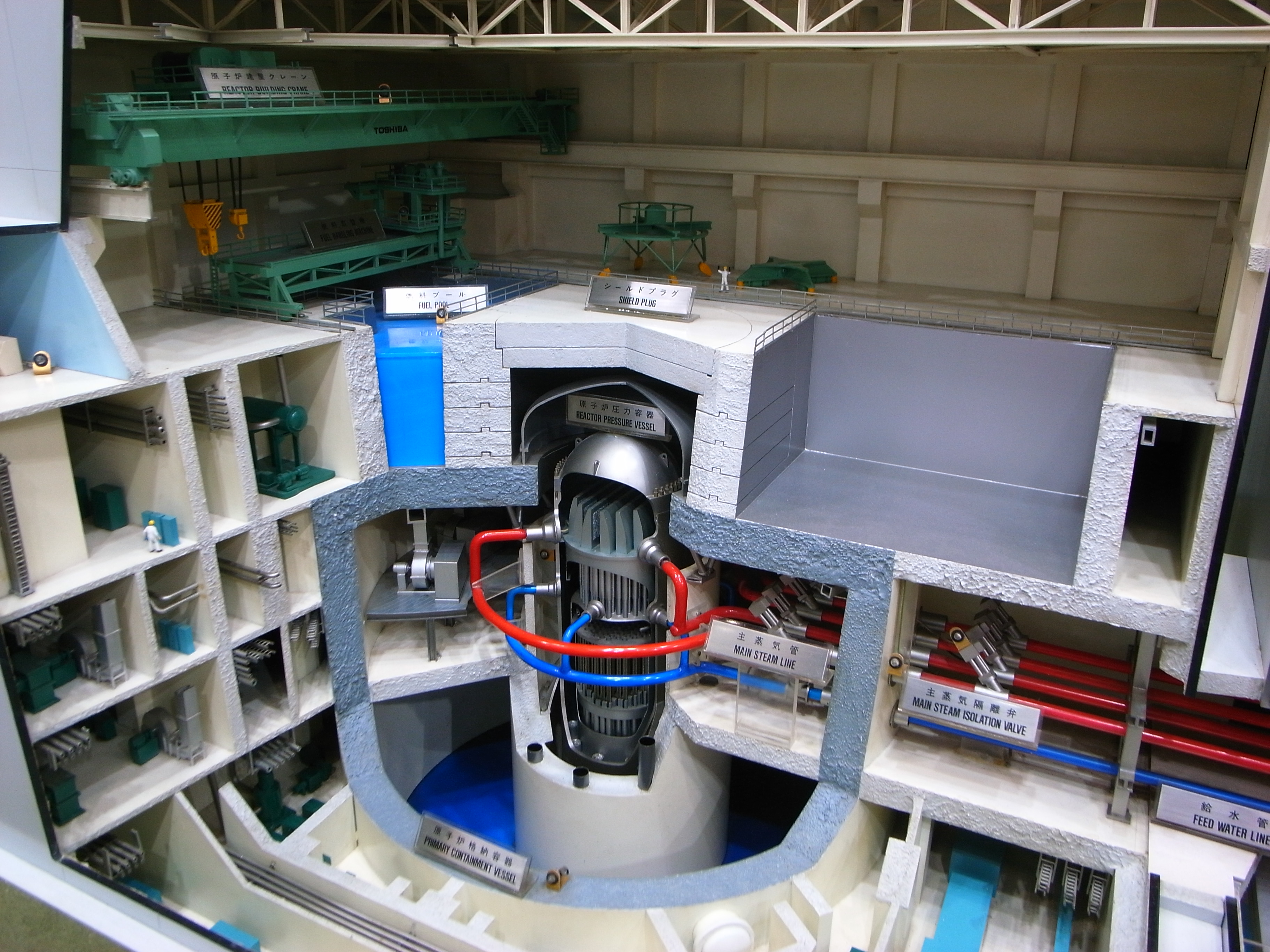|
Reactor Protection System
A reactor protection system (RPS) is a set of nuclear safety and security components in a nuclear power plant designed to safely shut down the reactor and prevent the release of radioactive materials. The system can "trip" automatically (initiating a scram), or it can be tripped by the operators. Trips occur when the parameters meet or exceed the limit setpoint. A trip of the RPS results in full insertion (by gravity in pressurized water reactors or high-speed injection in boiling water reactors) of all control rods and shutdown of the reactor. Pressurized water reactors Some of the measured parameters for US pressurized water plants would include: *"High power", auctioneered between high nuclear power and high differential temperature (delta T) between the inlet and outlet of the reactor vessel (a measure of the thermal power for a given RCS flowrate). *"High startup rate" (active below 10-4 percent power) at low power levels. *"High pressurizer pressure" *"Low reactor coola ... [...More Info...] [...Related Items...] OR: [Wikipedia] [Google] [Baidu] |
Nuclear Safety And Security
Nuclear safety is defined by the International Atomic Energy Agency (IAEA) as "The achievement of proper operating conditions, prevention of accidents or mitigation of accident consequences, resulting in protection of workers, the public and the environment from undue radiation hazards". The IAEA defines nuclear security as "The prevention and detection of and response to, theft, sabotage, unauthorized access, illegal transfer or other malicious acts involving nuclear materials, other radioactive substances or their associated facilities". This covers nuclear power plants and all other nuclear facilities, the transportation of nuclear materials, and the use and storage of nuclear materials for medical, power, industry, and military uses. The nuclear power industry has improved the safety and performance of reactors, and has proposed new and safer reactor designs. However, a perfect safety cannot be guaranteed. Potential sources of problems include human errors and external ... [...More Info...] [...Related Items...] OR: [Wikipedia] [Google] [Baidu] |
Nuclear Power Plant
A nuclear power plant (NPP), also known as a nuclear power station (NPS), nuclear generating station (NGS) or atomic power station (APS) is a thermal power station in which the heat source is a nuclear reactor. As is typical of thermal power stations, heat is used to generate steam that drives a steam turbine connected to a electric generator, generator that produces electricity. , the International Atomic Energy Agency reported that there were 410 nuclear power reactors in operation in 32 countries around the world, and 57 nuclear power reactors under construction. Most nuclear power plants use thermal reactors with enriched uranium in a Nuclear fuel cycle#Once-through nuclear fuel cycle, once-through fuel cycle. Fuel is removed when the percentage of neutron poison, neutron absorbing atoms becomes so large that a nuclear chain reaction, chain reaction can no longer be sustained, typically three years. It is then cooled for several years in on-site spent fuel pools be ... [...More Info...] [...Related Items...] OR: [Wikipedia] [Google] [Baidu] |
Nuclear Reactor
A nuclear reactor is a device used to initiate and control a Nuclear fission, fission nuclear chain reaction. They are used for Nuclear power, commercial electricity, nuclear marine propulsion, marine propulsion, Weapons-grade plutonium, weapons production and Research reactor, research. Fissile material, Fissile nuclei (primarily uranium-235 or plutonium-239) absorb single neutron, neutrons and split, releasing energy and multiple neutrons, which can induce further fission. Reactors stabilize this, regulating Neutron absorber, neutron absorbers and neutron moderator, moderators in the core. Fuel efficiency is exceptionally high; Enriched uranium#Low-enriched uranium (LEU), low-enriched uranium is 120,000 times more energy dense than coal. Heat from nuclear fission is passed to a working fluid Nuclear reactor#By coolant, coolant. In commercial reactors, this drives Turbine, turbines and electrical generator shafts. Some reactors are used for district heating, and isotopes, isoto ... [...More Info...] [...Related Items...] OR: [Wikipedia] [Google] [Baidu] |
Radioactive Decay
Radioactive decay (also known as nuclear decay, radioactivity, radioactive disintegration, or nuclear disintegration) is the process by which an unstable atomic nucleus loses energy by radiation. A material containing unstable nuclei is considered ''radioactive''. Three of the most common types of decay are Alpha decay, alpha, Beta decay, beta, and Gamma ray, gamma decay. The weak force is the Fundamental interactions, mechanism that is responsible for beta decay, while the other two are governed by the electromagnetic force, electromagnetic and nuclear forces. Radioactive decay is a randomness, random process at the level of single atoms. According to quantum mechanics, quantum theory, it is impossible to predict when a particular atom will decay, regardless of how long the atom has existed. However, for a significant number of identical atoms, the overall decay rate can be expressed as a decay constant or as a half-life. The half-lives of radioactive atoms have a huge range: f ... [...More Info...] [...Related Items...] OR: [Wikipedia] [Google] [Baidu] |
Scram
A scram or SCRAM is an emergency shutdown of a nuclear reactor effected by immediately terminating the fission reaction. It is also the name that is given to the manually operated kill switch that initiates the shutdown. In commercial reactor operations, this type of shutdown is often referred to as a "scram" at boiling water reactors, a "reactor ''trip''" at pressurized water reactors and "EPIS" at a CANDU reactor. In many cases, a scram is part of the routine shutdown procedure which serves to test the emergency shutdown system. Etymology There is no definitive origin for the term. United States Nuclear Regulatory Commission historian Tom Wellock notes that '' scram'' is English-language slang for leaving quickly and urgently (as in scrambling to get away), and he cites this as the original and most likely accurate basis for the use of ''scram'' in the technical context. Scram is sometimes cited as being an acronym for safety control rod axe man or safety cut rope axe ... [...More Info...] [...Related Items...] OR: [Wikipedia] [Google] [Baidu] |
Control Rod
Control rods are used in nuclear reactors to control the rate of fission of the nuclear fuel – uranium or plutonium. Their compositions include chemical elements such as boron, cadmium, silver, hafnium, or indium, that are capable of absorbing many neutrons without themselves decaying. These elements have different neutron capture cross sections for neutrons of various energies. Boiling water reactors (BWR), pressurized water reactors (PWR), and heavy-water reactors (HWR) operate with thermal neutrons, while breeder reactors operate with fast neutrons. Each reactor design can use different control rod materials based on the energy spectrum of its neutrons. Control rods have been used in nuclear aircraft engines like Project Pluto as a method of control. Operating principle Control rods are inserted into the core of a nuclear reactor and adjusted in order to control the rate of the nuclear chain reaction and, thereby, the thermal power output of the reactor, the rate ... [...More Info...] [...Related Items...] OR: [Wikipedia] [Google] [Baidu] |
Nuclear Power
Nuclear power is the use of nuclear reactions to produce electricity. Nuclear power can be obtained from nuclear fission, nuclear decay and nuclear fusion reactions. Presently, the vast majority of electricity from nuclear power is produced by nuclear ''fission'' of uranium and plutonium in nuclear power plants. Nuclear ''decay'' processes are used in niche applications such as radioisotope thermoelectric generators in some space probes such as ''Voyager 2''. Reactors producing controlled fusion power, ''fusion'' power have been operated since 1958 but have yet to generate net power and are not expected to be commercially available in the near future. The first nuclear power plant was built in the 1950s. The global installed nuclear capacity grew to 100GW in the late 1970s, and then expanded during the 1980s, reaching 300GW by 1990. The 1979 Three Mile Island accident in the United States and the 1986 Chernobyl disaster in the Soviet Union resulted in increased regulation and p ... [...More Info...] [...Related Items...] OR: [Wikipedia] [Google] [Baidu] |
Nuclear Safety And Security
Nuclear safety is defined by the International Atomic Energy Agency (IAEA) as "The achievement of proper operating conditions, prevention of accidents or mitigation of accident consequences, resulting in protection of workers, the public and the environment from undue radiation hazards". The IAEA defines nuclear security as "The prevention and detection of and response to, theft, sabotage, unauthorized access, illegal transfer or other malicious acts involving nuclear materials, other radioactive substances or their associated facilities". This covers nuclear power plants and all other nuclear facilities, the transportation of nuclear materials, and the use and storage of nuclear materials for medical, power, industry, and military uses. The nuclear power industry has improved the safety and performance of reactors, and has proposed new and safer reactor designs. However, a perfect safety cannot be guaranteed. Potential sources of problems include human errors and external ... [...More Info...] [...Related Items...] OR: [Wikipedia] [Google] [Baidu] |
Generation III Reactor
Generation III reactors, or Gen III reactors, are a class of nuclear reactors designed to succeed Generation II reactors, incorporating evolutionary improvements in design. These include improved fuel technology, higher thermal efficiency, significantly enhanced safety systems (including passive nuclear safety), and standardized designs intended to reduce maintenance and capital costs. They are promoted by the Generation IV International Forum (GIF). The first Generation III reactors to begin operation were Kashiwazaki 6 and 7 advanced boiling water reactors (ABWRs) in 1996 and 1997. From 2012, both have been shut down due to a less permissive political environment in the wake of the Fukushima nuclear accident. Due to the prolonged period of stagnation in the construction of new reactors and the continued (albeit declining) popularity of Generation II/II+ designs in new construction, relatively few third generation reactors have been built. Overview The older Gen II reactors ... [...More Info...] [...Related Items...] OR: [Wikipedia] [Google] [Baidu] |
Generation IV Reactor
Generation IV (Gen IV) reactors are nuclear reactor design technologies that are envisioned as successors of generation III reactors. The Generation IV International Forum (GIF) – an international organization that coordinates the development of generation IV reactors – specifically selected six reactor technologies as candidates for generation IV reactors. The designs target improved safety, sustainability, efficiency, and cost. The World Nuclear Association in 2015 suggested that some might enter commercial operation before 2030. No precise definition of a Generation IV reactor exists. The term refers to nuclear reactor technologies under development as of approximately 2000, and whose designs were intended to represent 'the future shape of nuclear energy', at least at that time. The six designs selected were: the gas-cooled fast reactor (GFR), the lead-cooled fast reactor (LFR), the molten salt reactor (MSR), the sodium-cooled fast reactor (SFR), the supercritical-water-cool ... [...More Info...] [...Related Items...] OR: [Wikipedia] [Google] [Baidu] |
Nuclear Power Plant Components
Nuclear may refer to: Physics Relating to the nucleus of the atom: *Nuclear engineering *Nuclear physics *Nuclear power *Nuclear reactor *Nuclear weapon *Nuclear medicine *Radiation therapy *Nuclear warfare Mathematics *Nuclear space *Nuclear operator * Nuclear congruence *Nuclear C*-algebra Biology Relating to the nucleus of the cell: * Nuclear DNA Society *Nuclear family, a family consisting of a pair of adults and their children Music * "Nuclear" (band), chilean thrash metal band * "Nuclear" (Ryan Adams song), 2002 *"Nuclear", a song by Mike Oldfield from his ''Man on the Rocks'' album * ''Nu.Clear'' (EP) by South Korean girl group CLC Films * ''Nuclear'' (film), a 2022 documentary by Oliver Stone. See also *Nucleus (other) *Nucleolus *Nucleation *Nucleic acid Nucleic acids are large biomolecules that are crucial in all cells and viruses. They are composed of nucleotides, which are the monomer components: a pentose, 5-carbon sugar, a phosphate group and a ni ... [...More Info...] [...Related Items...] OR: [Wikipedia] [Google] [Baidu] |




